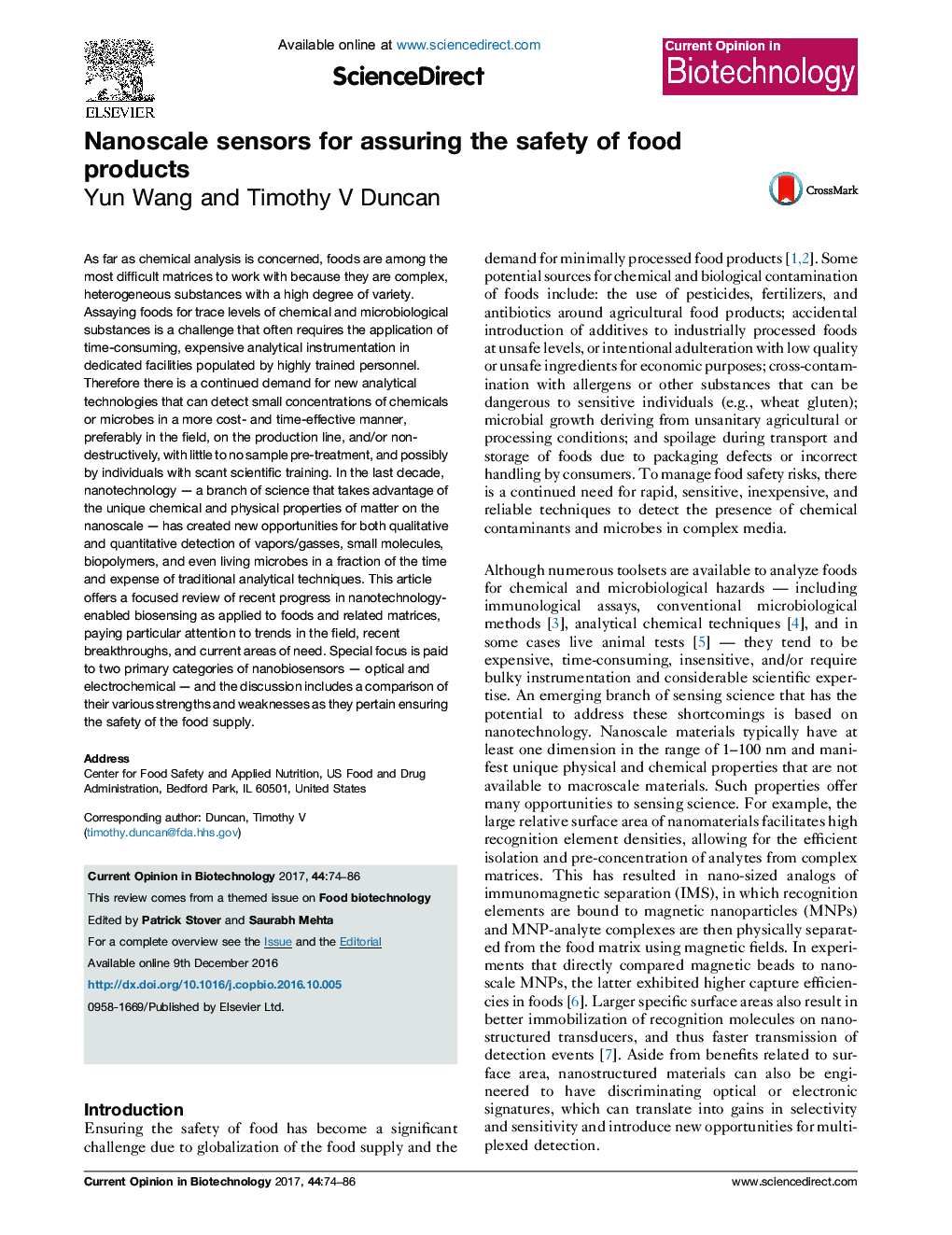| Article ID | Journal | Published Year | Pages | File Type |
|---|---|---|---|---|
| 6451540 | Current Opinion in Biotechnology | 2017 | 13 Pages |
â¢Nanomaterials offer new opportunities for sensing in complex media.â¢Nanosensors can detect ions, small molecules, biomolecules, and pathogens in foods.â¢Optical sensors offer fast and real-time visual detection of food analytes.â¢Electrochemical sensors are easily adapted to hand-held devices.â¢Validation, sample prep, and tech transfer are challenges that need to be solved.
As far as chemical analysis is concerned, foods are among the most difficult matrices to work with because they are complex, heterogeneous substances with a high degree of variety. Assaying foods for trace levels of chemical and microbiological substances is a challenge that often requires the application of time-consuming, expensive analytical instrumentation in dedicated facilities populated by highly trained personnel. Therefore there is a continued demand for new analytical technologies that can detect small concentrations of chemicals or microbes in a more cost- and time-effective manner, preferably in the field, on the production line, and/or non-destructively, with little to no sample pre-treatment, and possibly by individuals with scant scientific training. In the last decade, nanotechnology - a branch of science that takes advantage of the unique chemical and physical properties of matter on the nanoscale - has created new opportunities for both qualitative and quantitative detection of vapors/gasses, small molecules, biopolymers, and even living microbes in a fraction of the time and expense of traditional analytical techniques. This article offers a focused review of recent progress in nanotechnology-enabled biosensing as applied to foods and related matrices, paying particular attention to trends in the field, recent breakthroughs, and current areas of need. Special focus is paid to two primary categories of nanobiosensors - optical and electrochemical - and the discussion includes a comparison of their various strengths and weaknesses as they pertain ensuring the safety of the food supply.
Graphical abstractDownload high-res image (146KB)Download full-size image
